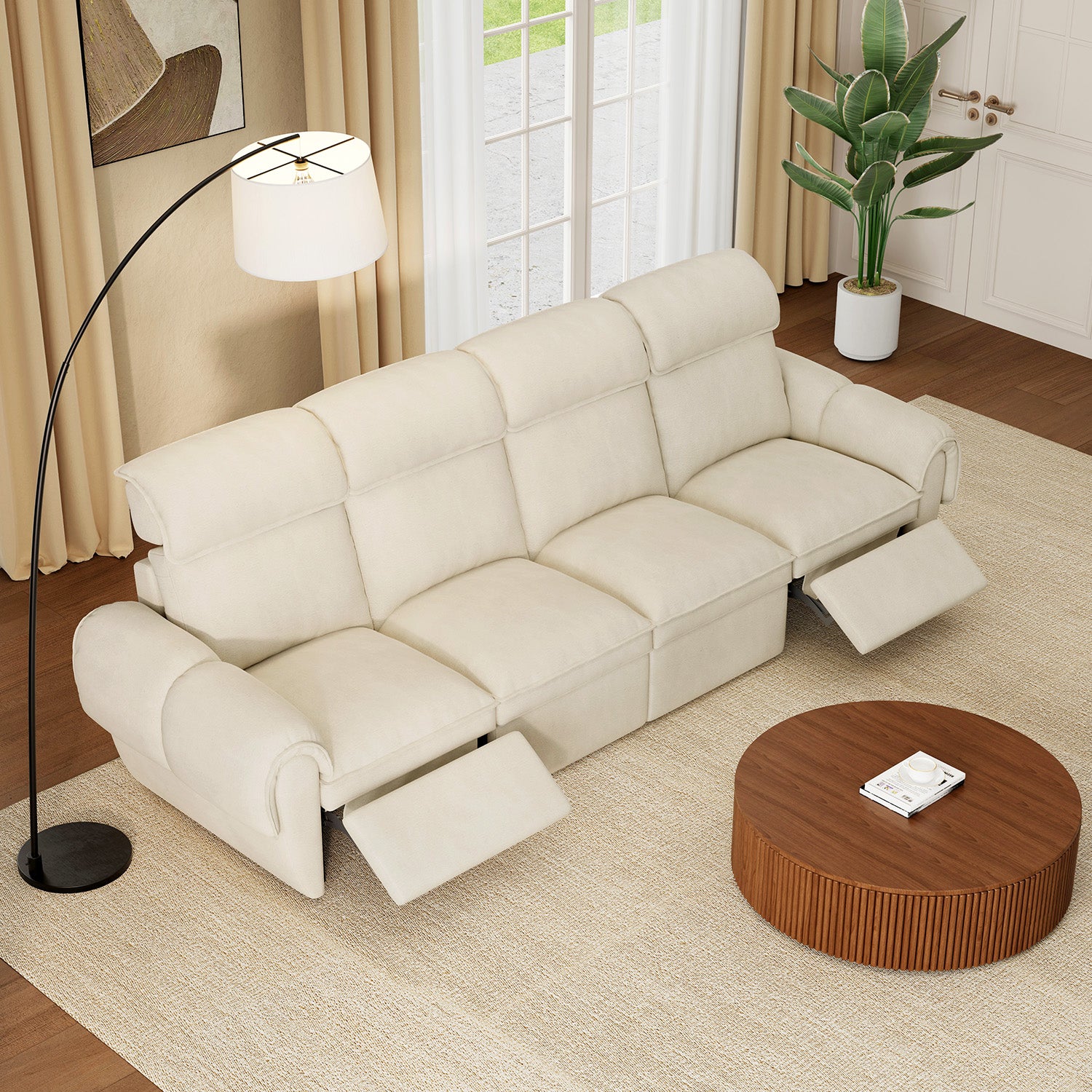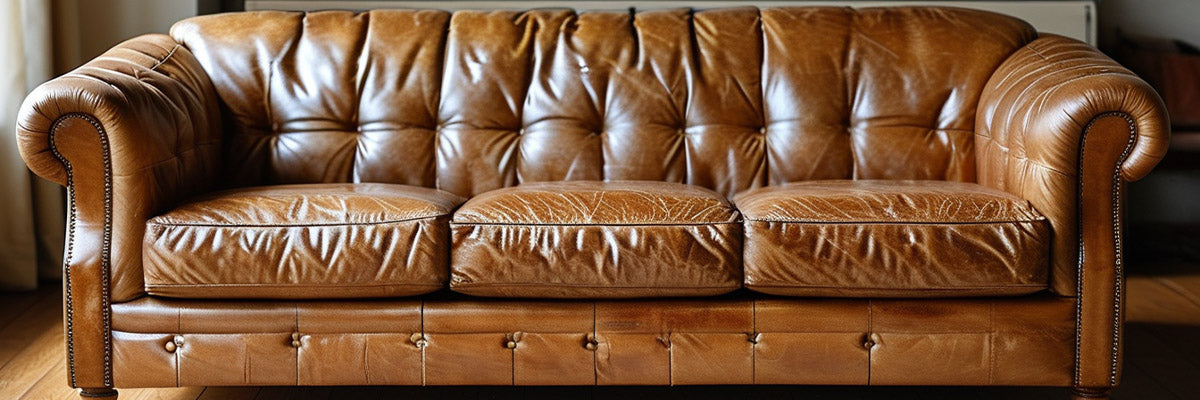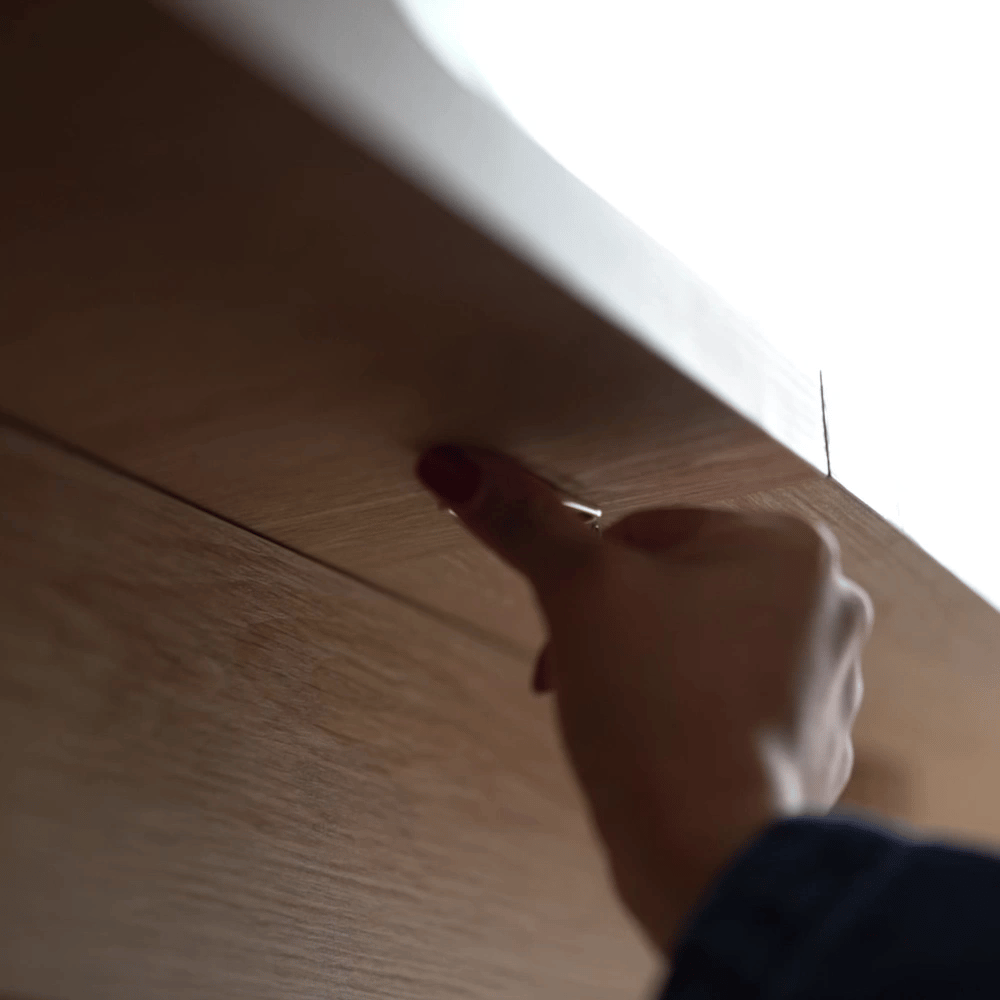Synthetic leather couches, often made from materials like polyurethane (PU) or polyvinyl chloride (PVC), are a popular choice for their affordability, durability, and sleek appearance. However, over time, these couches can develop cracks, peeling, or scratches due to regular use, exposure to sunlight, or aging. While damaged synthetic leather might seem like the end of your couch's lifespan, most issues can be fixed with the right tools and techniques. This guide will walk you through how to repair your synthetic leather couch and restore its look.
Table of Content
Common Problems with Synthetic Leather Couches
1. Peeling:
The surface layer of synthetic leather may flake or peel over time, especially in high-traffic areas.
2. Cracks:
Small cracks can appear due to dryness or prolonged exposure to sunlight.
3. Scratches and Scuffs:
These are common in households with pets or children.
4. Holes or Tears:
Sharp objects or excessive pressure can cause punctures or rips in the material.
What You’ll Need

To repair your synthetic leather couch, gather the following tools and materials:
- Synthetic leather repair kit (available at hardware or furniture stores)
- Vinyl adhesive or leather glue
- Sandpaper (fine-grit)
- Soft cloths or sponges
- Scissors (if patches are needed)
- Tweezers (optional, for precise repairs)
- Acrylic paint or colorant (to match the couch)
- Clear sealant or finishing coat
- Heat gun or hairdryer (for professional repair kits with heat-activated compounds)
Step-by-Step Guide to Repairing a Synthetic Leather Couch
1. Assess the Damage
Examine your couch to identify the extent of the damage. Is it peeling, cracked, or torn? Different issues require specific repair methods, so this step is crucial to ensure you choose the right approach.
---
2. Clean the Affected Area
Before starting any repair work:
- Use a damp, soft cloth to clean the damaged area and remove dirt, oils, or debris.
- Avoid harsh cleaners that can worsen the damage or degrade synthetic leather.
Let the surface dry completely before proceeding.
---
3. Repair Peeling or Flaking Areas
Peeling is one of the most common issues with synthetic leather. Here’s how to fix it:
- Trim Loose Edges: Use scissors or a razor blade to carefully cut away any loose or peeling pieces. This creates a clean surface for the repair.
- Apply Vinyl Adhesive: Use a small amount of vinyl adhesive to secure any remaining flaps of synthetic leather. Spread the adhesive evenly with a spatula or your finger.
- Smooth the Surface: Once the adhesive dries, lightly sand the area with fine-grit sandpaper to create a smooth surface.
---
4. Fix Cracks and Scratches
For minor cracks and scratches:
- Fill the Cracks: Use a synthetic leather filler or repair compound from a repair kit. Apply it with a spatula, filling the cracks evenly.
- Dry and Sand: Allow the filler to dry completely, then sand it lightly to ensure a smooth, even finish.
---
5. Patch Holes or Tears
For larger holes or tears, you’ll need a patch:
- Cut a Patch: Use material from the repair kit or a matching piece of synthetic leather to create a patch slightly larger than the hole.
- Apply Glue: Use leather glue or vinyl adhesive to attach the patch to the underside of the tear, ensuring it overlaps all edges.
- Press Firmly: Smooth the patch with your fingers or a spatula to remove air bubbles. Let it dry thoroughly.
---
6. Match the Color
To make the repair blend seamlessly with the rest of the couch:
- Use Acrylic Paint or Colorant: Choose a paint or colorant specifically designed for synthetic leather. Match it to your couch’s color as closely as possible.
- Apply Thin Layers: Use a soft sponge or brush to apply the paint in thin, even layers. Allow each layer to dry before adding the next.
- Blend the Edges: Feather the edges of the painted area to blend it into the surrounding material.
---
7. Seal the Repair
Once the repair is complete:
- Apply a Clear Sealant: Use a finishing coat or sealant to protect the repaired area and restore the synthetic leather’s sheen.
- Dry and Buff: Allow the sealant to dry completely, then buff the area gently with a soft cloth for a polished finish.
Tips for Maintaining a Synthetic Leather Couch
To avoid future damage and keep your couch in good condition:
1. Avoid Direct Sunlight:
Prolonged exposure to sunlight can dry out synthetic leather, causing cracks and fading.
2. Clean Regularly:
Wipe the couch with a damp cloth weekly to remove dust and prevent dirt buildup.
3. Use Leather Conditioner:
Apply a synthetic leather conditioner every few months to maintain flexibility and prevent cracking.
4. Prevent Scratches:
Keep pets’ claws trimmed and avoid placing sharp objects on the couch.
5. Rotate Cushions:
If your couch has removable cushions, rotate them regularly to distribute wear evenly.

When to Call a Professional
While most minor repairs can be handled at home, some situations may require professional help:
- The damage is extensive or covers a large area.
- The synthetic leather is severely discolored or degraded.
- You’re unable to find a matching color for paint or patches.
Professional upholsterers have the tools and expertise to repair severe damage and can ensure a flawless finish.
When to Call a Professional
While many spring repairs can be done at home, some situations require professional help:
- The frame is damaged or warped.
- Multiple springs are broken or detached.
- The couch is antique or high-value, requiring specialized restoration techniques.
In such cases, a professional upholsterer can ensure a thorough and safe repair.
Conclusion
Repairing a synthetic leather couch is a cost-effective way to extend its lifespan and restore its appearance. With the right tools, materials, and techniques, you can fix common issues like peeling, cracks, and tears at home. Regular maintenance and care will prevent further damage and keep your couch looking great for years to come. Whether it’s a small scratch or a larger tear, these DIY solutions can help you bring new life to your furniture.
If you want to buy our home furniture or couch for living room, you can check out more on our store





































